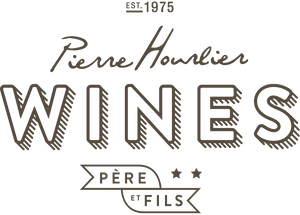Lirac
The Southern Rhône Valley is home to prestigious wine appellations, such as Châteauneuf-du-Pape, Vacqueyras and Rasteau. This is red wine territory where blends of Grenache, Syrah, Mourvèdre and other local varieties come together to produce elegant and rustic wines. However, not all appellations in the area receive the same attention, despite making wine of the highest quality. Lirac is one of those underappreciated appellations.
Considered one of the famous “Crus” of the Côtes du Rhône, Lirac is the source of extraordinary wine at a great price. When it comes from one of the many dedicated cooperatives and talented producers in the area, Lirac wine is world class.
History of Lirac
Lirac may not be the most popular French wine appellation today, but it dates back to the Romans, as its warm, dry soils have consistently proven ideal for growing grapes.
The appellation became prominent in the 14th century, as people in high positions, including Pope Innocent VI, King Henry IV of France and Louis XIV regularly enjoyed the area’s rich red wines. In the 18th century, Lirac’s popularity re-surged, and its wines were exported to Europe’s greatest capital cities.
Of course, Lirac was one of the first wine regions to be part of the esteemed Côtes du Rhône AOC in 1937 and by 1947, Lirac got its appellation. The quality today is better than ever.
The Grapes in Lirac
Lirac wines are made in the Southern Rhône style. Meaning that winemakers blend local grapes to produce complex wines. Grenache, Syrah and Mourvèdre represent at least 25% of the planted area, supported by other local varieties, such as Carignan, Counoise and Piquepoul.
White grapes are less common in the warm wine region, but winemakers produce rich, medium-bodied white wines with Bourboulenc, Clairette, Viognier and Grenache Blanc.
Strict rules limit the use of the grapes to ensure consistency and to protect the bold and rustic style that has made Lirac wines stand out for centuries.
The Terroir in Lirac
Lirac lies in the western Rhône Valley, in the department of Gard, neighbouring the famous Châteauneuf-du-Pape appellation. Both regions share similarities in terms of soil and climate. Red clay and large pebbles are common and necessary to produce the region’s wine style. The soil keeps heat, which is radiated back into the wine grapes ripening them, even at night.
Droughts are common in the area, which makes grape vines produce concentrated fruit, a source of inky red wines with lots of character. Grape vines struggle in the wine region, so winemaking is not easy; another reason why the wine is special.
Wine Styles in Lirac
Lirac produces red, white, and rosé wines, but it is undoubtedly a predominantly red wine producer. By law, producers must make red Lirac with at least 40% Grenache and 25% combined with Syrah and Mourvèdre. Other local varieties can make the rest.
Despite its rustic appeal, Lirac is often described as the softest and most approachable red wine in the region, although some producers make bolder styles. Red fruit scents, along with cooking herbs, earthbound aromas and hints of leather, are common in traditional Lirac wines, making them compatible with a wide range of foods, including grilled red meat, game and hearty stews.
-
Lirac: Domaine Croze Granier RedDeep ruby red robe. On the nose, aromas of dark olive and garrigue, a lot of freshness. Full fruity attack on the palate, hints of blackcurrant jam and raspberry. Full-bodied and fresh.
- £22.50
- £22.50
- Unit price
- per


